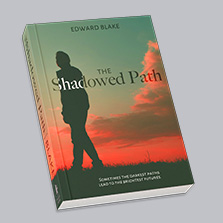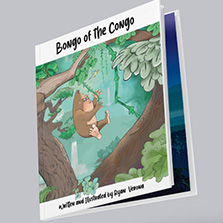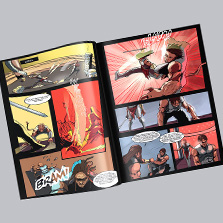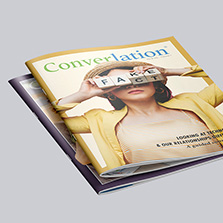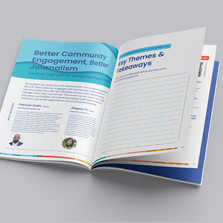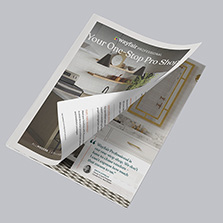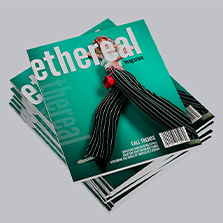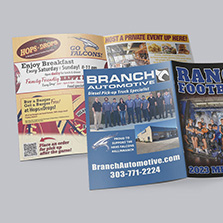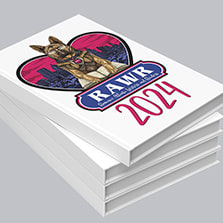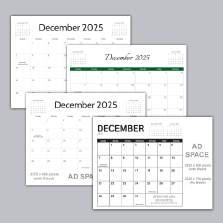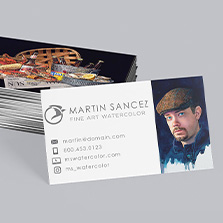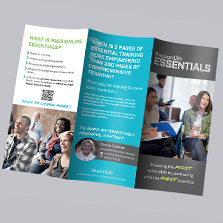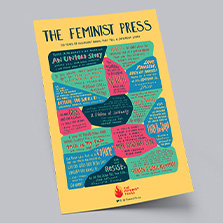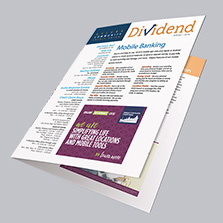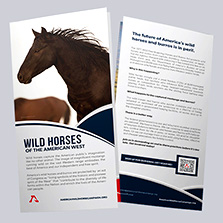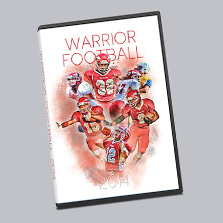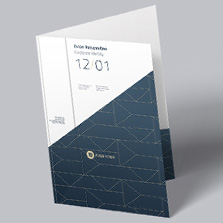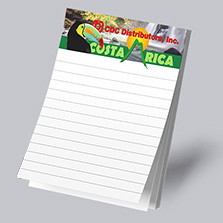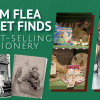
Behind the Print with ConTexos Chicago
Welcome to the latest episode of Behind The Print, where we bring you the creative stories of industry leaders shaping the world of professional printing. In this episode of Behind The Print, we’re joined by ConTextos Chicago Media and Communication Specialist, Killian Harris. With an endless supply of compassion and understanding, Killian walks us through how she uses storytelling and print to spread the message of ConTexos and help those in need.
Below, you’ll find the transcript of our conversation, edited for clarity to ensure easy reading. If you want the full, authentic experience, make sure to check out the video attached below.
Connor: Welcome back to Behind The Print, where we feature industry leaders and uncover the creative minds and their businesses within the world of professional printing. Our mission is to give you inspiring, actionable resources that elevate your projects and accelerate your path to profit and excellence in print. Joining me today is ConTextos Chicago Media and Communication Specialist, Killian Harris. Welcome to the podcast!
Killian: It’s good to be here. Thanks for having me.
Connor: If you’re ready, let’s dive right in. Tell me a little about yourself and what you do.

Killian: I’m Killian, and I work with ConTextos, a nonprofit in Chicago and El Salvador. We focus on healing centered programming that helps people tell their stories. We use storytelling as a vehicle to look at trauma, community healing, and a communal practice of restorative storytelling.
Connor: I’m curious, where did the name ConTextos come from?
Killian: It’s a bit of a double meaning. ConTextos is rooted in Spanish, and it plays with text because that’s how we do our work. It’s also about context. It is really important to understand the context of the people we work with and the communities we serve. When you know where someone is coming from, you have what you need to walk alongside them on a healing journey.
Connor: Can you tell me about the services ConTextos provides?
Killian: Absolutely. Our main program is what we call Author Circle. It’s a roughly six month process where we gather and tell the stories of our lives. We work through things that have happened in the past, and from those conversations each person chooses a story to tell as an illustrated memoir. We help them write and figure out how they want to illustrate through collage. We end up with fully illustrated, printed memoirs, usually about 30 to 35 pages. We do a lot of this work in Cook County Jail here in Chicago, across multiple divisions. It’s powerful and very meaningful.
Connor: Judging by your website and your printing projects, you have a broad audience. Who would you describe as your typical clientele?
“Our main program is what we call Author Circle. It’s a roughly six month process where we gather and tell the stories of our lives. We work through things that have happened in the past, and from those conversations each person chooses a story to tell as an illustrated memoir. We help them write and figure out how they want to illustrate through collage.”
Killian: ConTextos works in the violence intervention space. Violence doesn’t happen in a vacuum. The context you come from informs what’s happening in your life and how you process it. If you’re never given tools to look at what you’ve gone through and contextualize it, it’s hard to heal. We say we serve everybody, and that’s true, but we seek to connect with people who haven’t been able to share their stories in their own words. People who have been disenfranchised, whose stories have been quieted. We want people to have a space where someone says, you have something important to share, and we’re here to listen, hold it, and help you make sense of it.

Connor: You touched on this already, but what kinds of problems do you help people with?
Killian: We don’t think of ourselves as fixers. We think of ourselves as second responders. We come in with a blanket and a water bottle and say, “you’ve gone through some things, and we’re here to sit with you and listen”. Often we might be the first people to ask, what happened here, and how did that feel? We don’t come in to fix. We hold space for people as they navigate what they want to heal from, and sometimes the things they didn’t realize they needed to heal from. That’s who we are, the ones who hold space.
Connor: I like the way you put that. Can you talk more about how you walk people through that process?
“We don’t think of ourselves as fixers. We think of ourselves as second responders. We come in with a blanket and a water bottle and say, “you’ve gone through some things, and we’re here to sit with you and listen”. Often we might be the first people to ask, what happened here, and how did that feel? We don’t come in to fix. We hold space for people as they navigate what they want to heal from, and sometimes the things they didn’t realize they needed to heal from. That’s who we are, the ones who hold space.”
Killian: Trust building is at the core. We walk into a room knowing this might be someone’s first time writing, or the first time someone has asked questions about who they are. We meet people where they are by asking questions. Every session starts with a greeting, usually one question for the circle. It can be as simple as, what was your favorite movie growing up, or as deep as, what is something you’re holding that you haven’t been able to share. Through genuine, responsive listening, people feel empowered to share pieces of themselves they haven’t seen before.
Another essential part is community. Healing does not happen in a vacuum. We don’t become our best selves alone. Bouncing ideas off others, reflecting together, noticing similarities and differences in our stories, that’s where the magic happens. I’m not alone. We are more connected than we thought. That’s beautiful.

Connor: Especially now, with everyone so engrossed in screens, it can feel more alienating. It sounds like you’re creating a space to form connections and get involved with community.
Killian: Absolutely. We want to go into people’s communities. Instead of telling everyone to come to our space, we show up where people already are. In the county jail, we go into different divisions to facilitate circles. For community circles, we go to neighborhoods. It’s important to instill confidence and make it clear we’re not fixing you or saving you. We’re here to be with you. Showing up where people are is what that looks like.
Connor: ConTextos is already pretty unique. How does it stand out from other nonprofits in your field?
Killian: We meet people where they are, and we’re happy to shift programming to meet needs. Our facilitators make curriculum plans and lead conversations, and they can pivot on a moment’s notice. They understand because they live in these communities and work alongside them. Another unique aspect is our approach to writing. We want our authors to talk in their own voice. This isn’t an English class. We’re not here to police grammar. We want people to own their story and tell it the way they want. They know what they want to say. We’re here to help them say it and amplify it.
Connor: And by showing up where people live and work, it’s like a doctor doing a house call. What better way to gain context than going to the location and meeting people where they are.
Killian: Exactly.
Connor: I saw on your website that ConTextos Chicago has served over 3,300 people. That’s an impressive milestone. Can you tell me about any other milestones?
Killian: We’re always trying to figure out what people are looking for and how to get them involved, because not everybody wants to write and that’s okay. From last year through mid year, we ran a lot of youth programming. We saw many 18 to 24 year olds come in for open mics, meet people, and build community. We created a hub for young people to have a space, connect with peers, and get mentorship from our community advocates who know local resources. They could also connect with our mental health consultant. It was wonderful to have them in our space.

We’re also asking what programming can be beyond writing. Last year we worked in the West Garfield Park neighborhood to co create a community garden. For folks who don’t know Chicago, that neighborhood hasn’t historically had many resources or green space. We hosted dinners, held conversations, and surveyed residents. We asked, we have resources, what do you want to build together. We worked with five author leaders who developed public speaking and project planning skills, and together we created a beautiful garden space. We’re always looking for new ways to show up.
“We’re always trying to figure out what people are looking for and how to get them involved, because not everybody wants to write and that’s okay. From last year through mid year, we ran a lot of youth programming. We saw many 18 to 24 year olds come in for open mics, meet people, and build community. We created a hub for young people to have a space, connect with peers, and get mentorship from our community advocates who know local resources.”
Connor: Public speaking can be intimidating at that age. Now it’s my job to talk to people, but at 18 to 24 that was daunting. What challenges are holding ConTextos back right now? What obstacles do you face?
Killian: There is so much need for what we do, even if people don’t think of writing and being together as healing. We’re one organization doing what we can. It’s a shaky time, and a lot of us are doom scrolling and trying to figure things out. We can only do so much. We believe everybody needs a little bit of ConTextos in their life. Everyone needs community support and the chance to share pieces of themselves without judgment or fear. The question is how do we do that without burning ourselves out, and still do the work well, when the need for second responders is so great.
Connor: Let’s talk about print. How has print helped elevate your work? I have one of your printed projects right here. It turned out really well.

Killian: It’s beautiful. Printing is a big part of what we do. We print individual memoirs and community compilations. Print lets people distribute their stories. We put stories online, and we also print copies so authors can give them to family and friends. That amplifies the storytelling we’re talking about. For many participants, this is the first time anyone has asked, what is your story, what are you dealing with, and how would you like to share it. Having a printed, physical book that says, this is the journey I went on, this is the family I found, this is the healing I’ve done, makes that journey feel real.
Print is also a tool for complicating narratives. You read something written by an author in Cook County who you might never have met otherwise. You get context and understanding. You realize this is a person whose life you’re glimpsing, and you can see pieces of who they are. That amplification is why print is integral to what we do.
“It’s beautiful. Printing is a big part of what we do. We print individual memoirs and community compilations. Print lets people distribute their stories. We put stories online, and we also print copies so authors can give them to family and friends. That amplifies the storytelling we’re talking about.”
Connor: With everyone glued to their phones, a book is not on a screen. You can hold it, set it on a coffee table. A guest can pick it up and flip through. It feels permanent compared to a screen.
Killian: Exactly. We’re losing some physical media to streaming and everything living online. You don’t always realize how nice it is to have something that’s yours, that you can hold. Print gives that to people.
Connor: Different question. If you had a day completely free to spend however you’d like, how would you spend it?
Killian: I would sleep in, for sure. I’d spend the morning with my cat. She’s a tiny brown tabby. I’d go to the beach in the afternoon and have some good food. In the evening I’d go to a concert or a movie. I love live performance, so probably a concert.
Connor: Any bands in mind?
Killian: One of my favorites right now is Vial, spelled V I A L. They’re a Minnesota punk band. They’re super fun, great live, and the energy is electric.
Connor: One last question. How can listeners get in touch, learn more, donate, or collaborate?
Killian: The best way is our website, ConTextos.org. If you want to reach out by email and learn more about ConTextos Chicago specifically, contact chicago@ConTextos.org. Those are the two best places to connect.
Connor: That’s a wrap on another episode of Behind The Print. Thank you for joining us as we explore the artistry and innovation of the printing world. Remember, having a strong vision, building the right strategy, and using tools like print to amplify your message will make your brand stand out. If you enjoyed today’s episode, get your sample pack at printingcenterusa.com and share this with your fellow business enthusiasts. Until next time, keep those creative sparks flying, and remember there’s always more to discover behind the print.


